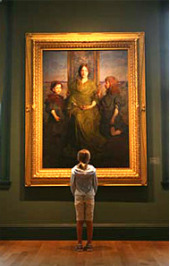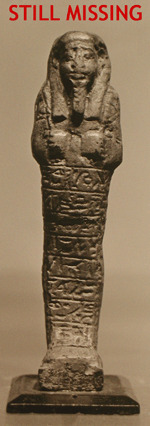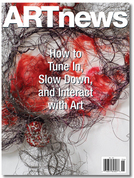 Art museums, let’s face it, have never been on the regular itinerary of a vast number of Americans. Whether they are intimidated, bored, uninterested, too busy, or afflicted by any other aversion, some people just won’t go look at paintings, sculpture, installations or any other kind of art.
Art museums, let’s face it, have never been on the regular itinerary of a vast number of Americans. Whether they are intimidated, bored, uninterested, too busy, or afflicted by any other aversion, some people just won’t go look at paintings, sculpture, installations or any other kind of art.
But this entry isn’t about them. This entry is about art students who won’t go to art museums. Apparently, some students today think that viewing art online is good enough or better. That’s what I discovered reading a blog item by Laurie Fendrich, a painter who lives and works in New York and is a professor of fine arts at Hofstra University. Here’s what she wrote:
Yesterday a colleague who teaches painting emailed me that it’s hard for him to get his students to go to a museum to look at a work of art. They just can’t see the point. Why schlep into New York to go to a museum to see a painting, especially since, as often as not, the hyper-bright, clean crisp image of it that’s posted on the museum’s Web site makes the real thing look limp and lame by comparison?
And later:
Going to a specific place in order to stand in a room and look at something that can’t be changed by a mere click and isn’t instantaneously about to morph into another image leaves a lot of the under-30 crowd utterly nonplussed. It’s easy to look at pictures, they think. They’ve been doing it their whole lives. They’re right — but what they don’t know is that they’ve been smothered by them, and no longer can really see them.
Well, as Canute proved, you can’t hold back the tide — in this case, technology. And who would want to? Technology has done marvelous things for the art world.
But that doesn’t mean surrendering to it either. It seems to me that art teachers, museum directors, curators and other professionals should be thinking just as hard about making the case that seeing the real thing is essential as they are about putting collections online and adding interactive technology. Technology can act as a gateway to art, an enhancer of understanding of art, and a tool for making art — but not as a substitute for seeing the real thing.
Fendrich’s blog is on the Chronicle of Higher Education’s Brainstorm site, here. If you go there, take a look at the comments, including this one from Alice V. Clarke.
I’m becoming more and more convinced that, while we always need to meet students where they are, and the digital era and all its multitasking have given us many advantages, it’s part of our job to nudge kids, kicking and screaming if need be, toward acquiring that old-fashioned type of focus required for deep reading, sustained viewing, and active listening. The culture at large isn’t going to foster that–it’s up to us.
Food for thought.
Photo Credit: Courtesy Smithsonian American Art Museum





